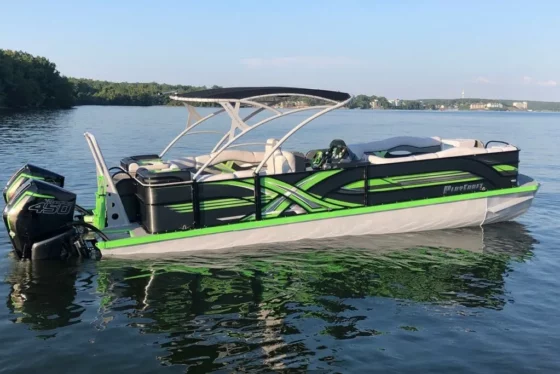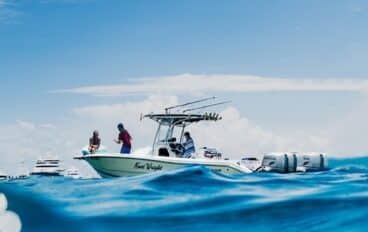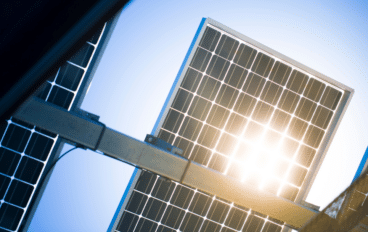
Are Pontoon Boats Fast?
Pontoon boats, also known as party barges or deck boats, are typically known for their spacious deck space, stability, and capacity for entertaining large groups of people. These boats are not usually associated with speed, as they are primarily designed for leisurely cruising and relaxing on the water.
However, some people have managed to make pontoon boats fast by installing high-performance motors and other modifications. This is not an easy feat, as pontoon boats are not built for speed and have a number of characteristics that make them less aerodynamic and less efficient than other types of boats.
One of the main reasons pontoon boats are not built for speed is their unique design. These boats have a flat bottom and are supported by two or more pontoons, also known as tubes, which are usually made of aluminum. The pontoons provide buoyancy, but they also create drag and make the boat less efficient in the water. Additionally, the flat bottom and large deck space of pontoon boats create a lot of wind resistance, which also slows the boat down.
Another reason pontoon boats are not built for speed is the type of motor typically used to power them. Pontoon boats are usually powered by outboard or inboard motors, which are not as powerful or efficient as the engines used in speed boats and other high-performance boats. Outboard motors, for example, are typically less powerful than inboard motors, and are not designed for high-speed operation.
How To Modify Pontoon Boats for Speed?
Despite these limitations, some people have managed to make pontoon boats fast by installing high-performance motors, such as high-horsepower outboards or inboard/outboard engines, and making other modifications to the boat. Some of the modifications that can be made include adding performance props, trim tabs, and even lifting the boat out of the water to reduce drag.
Additionally, tri-toon boats which have three pontoons, can go faster than traditional 2 pontoon boats, as it provides more stability and reduces drag, hence increases speed.
However, it is important to keep in mind that making these modifications can be expensive and may not be practical or safe for everyday use. High-performance motors and other modifications can also greatly increase the cost of the boat, and may not be worth the investment for someone who primarily uses their pontoon boat for leisurely cruising.
What Factors Impact the Speed of a Pontoon Boat?
The average speed of a pontoon boat can vary greatly depending on a number of factors such as the size and weight of the boat, the horsepower of the motor, and the type and condition of the propeller. On average, most pontoon boats can reach speeds of around 30 mph under ideal conditions. However, it is important to keep in mind that this is an ideal or maximum speed and most people operate their boats at lower speeds.
When it comes to the size of the pontoon boat, smaller boats with lower horsepower engines typically have lower maximum speeds. For example, a two-tube pontoon boat under ideal conditions will typically average around 20-25 mph. While a large pontoon boat with a high-powered motor can reach speeds of 30 mph or more.
The horsepower of the motor is also a major factor in determining a pontoon boat’s speed. Higher horsepower engines can provide more power to the propeller, allowing the boat to reach higher speeds. On average, a pontoon boat with a 150 horsepower motor and a good propeller can reach speeds of around 20-25 mph. However, larger pontoon boats with more powerful motors can reach speeds of 30 mph or more.
In addition to the size and horsepower of the motor, the type and condition of the propeller also affect the speed of a pontoon boat. A high-performance propeller can provide more thrust and help the boat reach higher speeds, while a damaged or worn propeller can reduce the boat’s performance and speed.
It is also important to consider the load on the pontoon boat when determining its speed. A heavy load of passengers and gear can slow the boat down, while a light load can allow it to reach higher speeds. So the speed of the pontoon boat also depends on how it’s loaded and how many people and gears it’s carrying.
Another factor that contributes to pontoon boat speed is the water conditions. In calm water, a pontoon boat can reach higher speeds than it would in choppy or rough water, as the waves and wind can slow the boat down. Therefore the environment, weather and water conditions also play a role in determining a pontoon boat’s speed.
In general, the speed of a pontoon boat can vary greatly depending on a number of factors such as the size and weight of the boat, the horsepower of the motor, and the type and condition of the propeller. While most pontoon boats can reach speeds of around 30 mph under ideal conditions, it is important to keep in mind that this is an ideal or maximum speed and most people operate their boats at lower speeds. Additionally, factors such as the load on the boat, the water conditions and weather, and the type of propeller also affect the speed of a pontoon boat. Therefore it is important to consider all these factors when determining the speed of a pontoon boat.
How About a Triton Boat?
A tritoon boat, also known as a tri-toon or triple-toon boat, is a type of pontoon boat that features three pontoons or tubes instead of the traditional two pontoons found on most pontoon boats. Tritoon boats are designed to offer improved performance on the water and can reach higher speeds than traditional pontoon boats.
The additional pontoon on a tritoon boat provides more stability and reduces drag, which allows the boat to go faster. Additionally, the design of tritoon boats often includes a more efficient hull shape and a higher horsepower engine, further enhancing performance.
The average speed of a tritoon boat is around 45 mph, which is significantly faster than the average speed of a traditional two-toon pontoon boat. In ideal conditions, tritoon boats can reach speeds of 50 mph or more, making them a popular choice for boaters who want to enjoy a faster ride on the water while still maintaining the stability and spacious deck space of a pontoon boat.
One of the main advantage of tritoon boat is the better stability it provides. The third pontoon creates a wider base, which provides more stability and makes the boat less prone to listing or capsizing. This also allows the boat to corner and handle better than traditional pontoon boats, providing a more enjoyable and safer boating experience.
Additionally, tritoon boats are also better equipped to handle rough water conditions. The extra buoyancy provided by the third pontoon gives the boat better control and handling in choppy or rough water, making them more versatile and suitable for a wider range of boating activities.
Another benefit of tritoon boats is that they provide more space for entertaining and relaxing. Tritoon boats feature large, open decks that can accommodate a lot of passengers, making them a great choice for boating with friends and family. They also often come with features such as a built-in sound system, a kitchen or cooking area, and a wide range of seating options to make the boating experience more comfortable and enjoyable.
While tritoon boats are faster than traditional pontoon boats, they are not built for speed. However, they are popular choice among boaters looking for a more performance-oriented pontoon boat while still maintaining the stability, space and comfort of a traditional pontoon boat. Additionally, tritoon boats are more versatile and suitable for a wider range of boating activities.
In conclusion, tritoon boats are a type of pontoon boat that features three pontoons instead of the traditional two pontoons. These boats are designed to offer improved performance on the water and can reach higher speeds than traditional pontoon boats. The average speed of a tritoon boat is around 45 mph, providing more speed while still maintaining the stability and spacious deck space of a pontoon boat. Additionally, tritoon boats are more versatile and suitable for a wider range of boating activities and are better equipped to handle rough water conditions. These benefits make tritoon boats a popular choice among boaters looking for a more performance-oriented pontoon boat.
What’s A Safe Speed For Pontoon Boats
When it comes to determining how fast a pontoon boat should go, safety should be the primary consideration. Pontoon boats are typically used as leisure boats, with a lot of gear and passengers on deck. At high speeds, the boat and its passengers are at a greater risk of accidents and injuries. For this reason, it is important to consider the speed limit when operating a pontoon boat.
Many states and localities have laws and regulations that govern the speed limit for boats in certain areas, such as no-wake zones or crowded marinas. These laws and regulations should be strictly followed to ensure the safety of all boats and passengers on the water. Additionally, the American Boat and Yacht Council (ABYC) recommends a speed limit of three to five miles per hour for boats operating in crowded or congested areas, such as marinas or busy waterways.
The number of passengers and the weight of the gear also should be taken into account when determining the appropriate speed for a pontoon boat. A heavy load of passengers and gear can slow the boat down, making it less stable and harder to control. At high speeds, the boat may be more prone to accidents or capsizing. For this reason, it is important to be aware of the weight and number of passengers on the boat at all times and adjust the speed accordingly.
Popular Pontoon Boats Speeds
- Bennington SX22: With a 200 horsepower engine, this boat can reach speeds of up to 45 mph.
- Premier 231 Solaris RF: With a 250 horsepower engine, this boat can reach speeds of up to 50 mph.
- Harris Grand Mariner SL 250: With a 300 horsepower engine, this boat can reach speeds of up to 55 mph.
- Manitou 23 Oasis VP: With a 300 horsepower engine, this boat can reach speeds of up to 55 mph.
- Regency 254 DL3: With a 300 horsepower engine, this boat can reach speeds of up to 55 mph.
- South Bay 925CR: With a 300 horsepower engine, this boat can reach speeds of up to 55 mph.
- Aqua Patio AP 255 DL3: With a 350 horsepower engine, this boat can reach speeds of up to 60 mph.
- Barletta C-Class 26Q: With a 200 horsepower engine, this boat can reach speeds of up to 45 mph.
- Crest II 220 SLC: With a 150 horsepower engine, this boat can reach speeds of up to 35 mph.
- JC Tri-Toon Sport Toon 250: With a 250 horsepower engine, this boat can reach speeds of up to 55 mph.
- NauticStar 232 Sport: With a 200 horsepower engine, this boat can reach speeds of up to 45 mph.
- Qwest Adventure 818 LS: With a 115 horsepower engine, this boat can reach speeds of up to 30 mph.
- Sylvan 8522 LZ LES: With a 200 horsepower engine, this boat can reach speeds of up to 45 mph.
- Triton 186 Fishunter: With a 150 horsepower engine, this boat can reach speeds of up to 35 mph.
- Playcraft X-treme 9022 DL: With a 150 horsepower engine, this boat can reach speeds of up to 35 mph.
- Sun Tracker SportFish 22 DLX: With a 115 horsepower engine, this boat can reach speeds of up to 30 mph.
- Voyager VX22: With a 200 horsepower engine, this boat can reach speeds of up to 45 mph.
What Pontoon Boats Are The Fastest?
The fastest pontoon boats are typically those that have been modified or upgraded with high-performance components such as more powerful engines, high-performance propellers, and aerodynamic enhancements such as race-inspired decks and hulls. Some manufacturers also offer high-performance models that are designed for speed.
It is worth noting that the fastest pontoon boats will typically have larger engines with more horsepower, which can help them reach higher speeds. Speed records for pontoon boats are not well established but some pontoon boats have been reported to reach speeds of over 80 mph.
However, it is important to note that these high-performance boats are built for speed and typically sacrifice comfort and amenities for the sake of performance. They are also less safe in certain conditions or if not operated by well trained and experienced operators. Therefore these boats are not recommended for the average boater, and speed should be carefully considered when operating any type of boat, especially in crowded areas or when there are other boats or swimmers in the vicinity.
Some high-performance models have been reported to have impressive speed abilities. These are just examples, but keep in mind that the speed of a pontoon boat can vary greatly depending on the weight of the boat, the number of passengers, and the condition of the water. I strongly recommend you to consult with the manufacturer of the specific model you have in mind for a more accurate and up-to-date information.
- Premier 231 Solaris RF: With a 250 horsepower engine, this boat can reach speeds of up to 50 mph.
- Aqua Patio AP 255 DL3: With a 350 horsepower engine, this boat can reach speeds of up to 60 mph.
- Manitou 23 Oasis VP: With a 300 horsepower engine, this boat can reach speeds of up to 55 mph.
What Factors Can Slow Down My Pontoon Boat?
- Weight: The weight of the boat, including passengers and gear, can slow down a pontoon boat. As the weight of the boat increases, it becomes more difficult for the engine to push the boat through the water, reducing its speed.
- Shape and size of the pontoons: Pontoons that are too large or too round can create drag, slowing the boat down. The shape of the pontoon also matters: if the pontoons have a V-shape, they will help the boat cut through the water more efficiently, but if they are round they can create drag and slow the boat down.
- Deck design and layout: The design and layout of the deck can affect the aerodynamics of the boat, with a flat surface being more efficient than one that is more complex with multiple levels.
- Loading and distribution of weight on the boat: An uneven weight distribution on the boat can cause it to handle poorly, slowing it down and making it harder to control.
- Condition of the pontoons: If the pontoons are not properly inflated or are damaged, they will create more drag, slowing the boat down.
- Water conditions: Rough or choppy waters can slow down a pontoon boat. The boat will have to fight against the waves to maintain its speed.
- Condition of the propellers: Propellers that are bent, nicked or have too much accumulation of marine growth can create drag and slow the boat down.
- Weather conditions: Wind resistance can slow down a pontoon boat, particularly when it’s against the wind.






